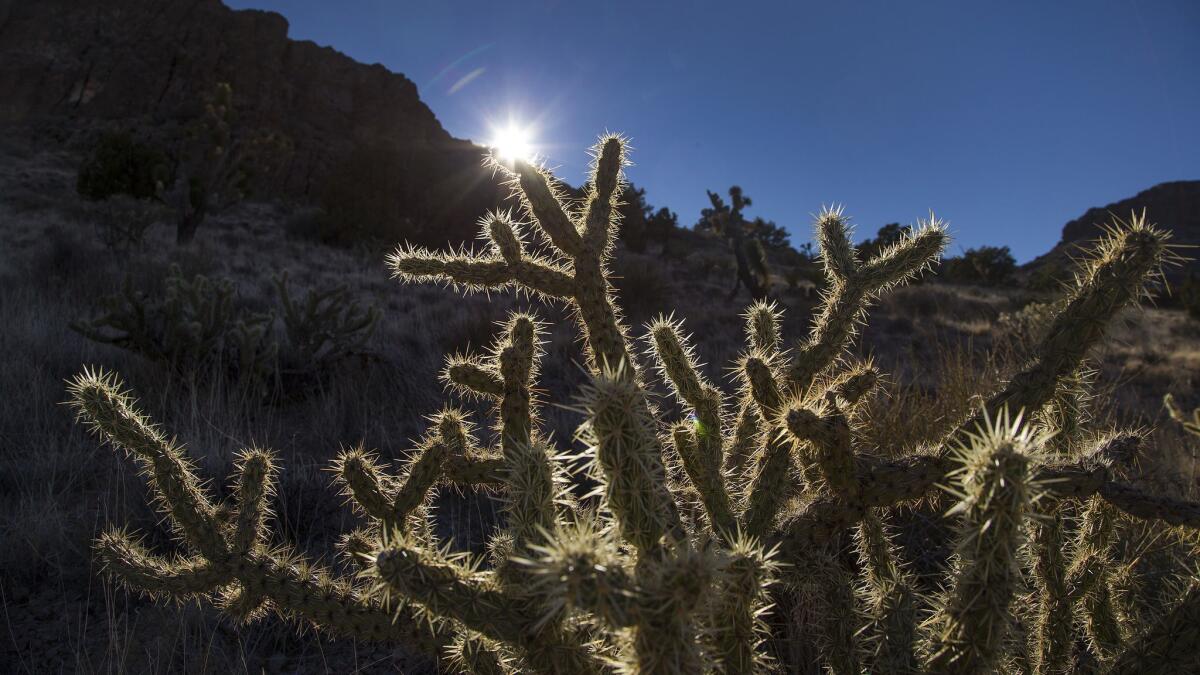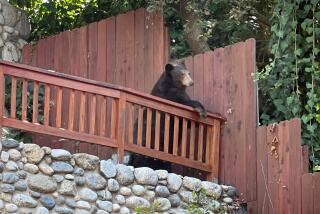Anonymous donor buys land to help protect ‘teddy bear’ cactus in Mojave

A parcel of land that is prime habitat for the so-called teddy bear cactus has been purchased for a Mojave Desert conservation organization.
An anonymous donor bought the 599 acres of Southern California land for $140,000 and deeded it to the Mojave Desert Land Trust, the Desert Sun newspaper reported.
The cactus is formally called the cholla, but it earned its cuddly but misleading nickname because dense coverings of painful spines resemble the fuzzy limbs of a teddy bear.
The land will provide a buffer between Interstate 40 and the Bigelow Cholla Wilderness Garden in the Bureau of Land Management’s Mojave Trails National Monument.
“Anytime we get that much land in a single go is a pretty exciting day,” Peter Satin, the trust’s director of land management, told the newspaper.
“From an ecological perspective, it has a ton of dry desert wash. When we have lots of rainfall, those will flood, and that’s really neat, because we’ll get the vegetation coming up,” he said.
It’s also good terrain for desert tortoises, which like washes.
The land was purchased from Las Vegas schoolteacher Roger Becker. In the 1980s, his mother invested in a gas station complex that was never built because there wasn’t enough traffic.
The land was sold with the understanding it would be permanently protected from mining or other destructive activities.
“Living here, the desert tortoise and the desert wildflowers are really special to our part of the country,” Becker said. “It’s going to come out OK for a better good. It’s good to know it will be preserved.”
The teddy bear cholla is also known as the jumping cactus because its fiendish barbs almost seem to fly off into anyone who makes the unwise decision to go near one.
“You go hiking and all of a sudden they’re stuck to your leg,” said Kyle Sullivan, manager of the national monument. “I’ve had them go through my boot, through my glove. They’re pretty rugged.”
More to Read
Sign up for Essential California
The most important California stories and recommendations in your inbox every morning.
You may occasionally receive promotional content from the Los Angeles Times.










